How to Use AI to Understand Reader Intent

AI can analyze user data, queries, and behaviors to reveal what your readers want. You may have spent hours guessing what topics will engage your audience. Sometimes, even your best ideas miss the mark. Reader intent means understanding the real reason someone clicks on your content. When you understand reader intent, you create more relevant posts, drive higher engagement, and see better results.
Numerical Value | Source | |
|---|---|---|
Percentage of enterprise companies worldwide (1,000+ employees) actively using AI | 42% | IBM |
Estimated monthly US users of generative AI | 100.1 million | eMarketer |
CEOs believing generative AI offers broad organizational benefits | 69% | Oliver Wyman Forum |
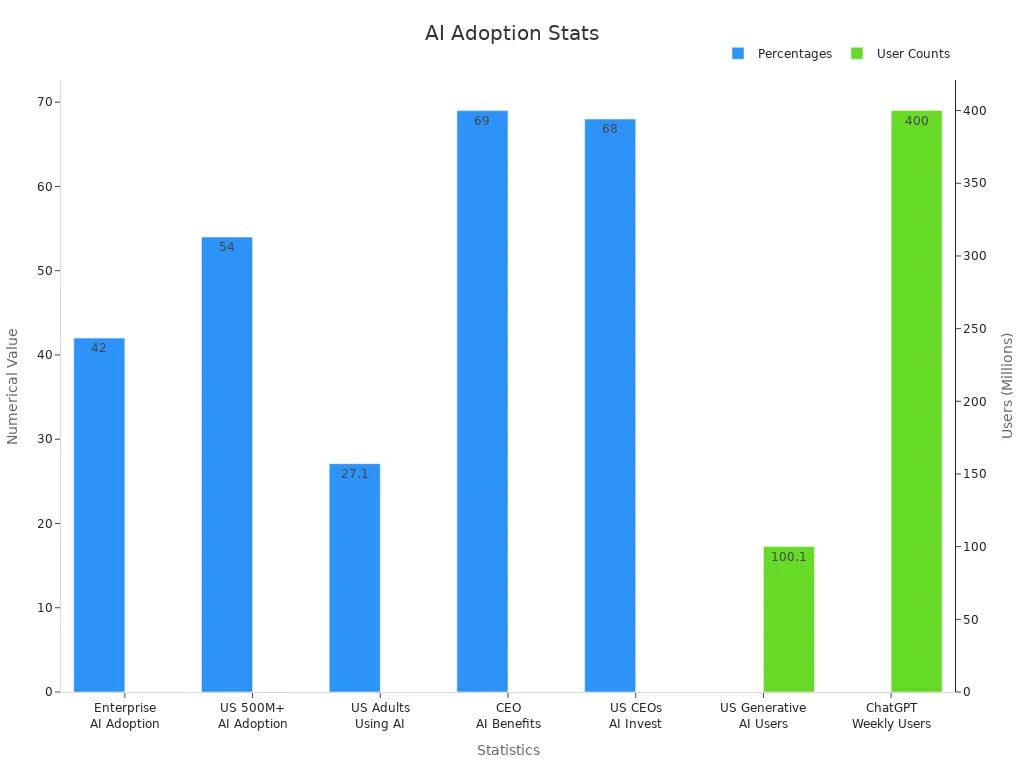
AI can process huge amounts of data and spot patterns that people often miss. These tools help you save time and improve your strategy. You can now understand reader intent faster and more accurately than ever before.
Key Takeaways
AI helps you understand what your readers really want by analyzing their searches and behaviors quickly and accurately.
Using AI to classify and categorize queries lets you create content that matches your audience’s needs and improves engagement.
Personalizing content with AI boosts user interest, increases conversions, and builds loyalty by showing relevant information to each reader.
AI tools track real-time trends and performance, so you can update your content fast and keep it fresh and effective.
Starting with one AI tool can help you audit your content and make smarter decisions that lead to better results.
Understand Reader Intent with AI
Artificial intelligence gives you powerful tools to understand reader intent. You can use AI models to classify, categorize, and compare user queries. These methods help you see what your audience wants, so you can create content that matches their needs.
Intent Classification
Intent classification is the process where AI models decide what a user wants when they type a query. For example, someone searching "best running shoes for flat feet" likely wants product recommendations, not just general information. AI can spot these differences by analyzing the words and patterns in each query.
Deep learning and artificial neural networks (ANNs) have shown strong results in classifying complex data. In healthcare, these models help doctors diagnose diseases and predict patient needs. This success shows that AI can handle classification tasks in many fields, including content and marketing.
The Mistral 7B large language model stands out for its ability to understand and classify queries. It uses advanced attention mechanisms to process language and can be fine-tuned for different tasks, such as chatbots or search engines. This flexibility makes it a strong choice for understanding what your readers want.
You can measure how well intent classification works by looking at accuracy and other metrics. Researchers use datasets like SLURP and Banking 77 to test models. For example, large language models like GPT-3.5 and BERT show high accuracy and low false negative rates, meaning they rarely miss the true intent behind a query.
Tip: Use intent classification to sort queries into groups like "informational," "transactional," or "navigational." This helps you match your content to what readers are really looking for.
Query Categorization
Query categorization takes intent classification a step further. Here, AI sorts queries into more specific categories. For example, a search for "how to fix a leaky faucet" falls under "home repair," while "symptoms of the flu" goes into "health advice." AI models use techniques like SMOTE and data augmentation to improve accuracy, even when some categories have fewer examples.
Category Group | Data Imbalance Level | AI Intervention | Metric | Before Intervention | After Intervention | Notes |
|---|---|---|---|---|---|---|
Severe Imbalance (Categories 8, 11, 12, 13) | <20% positive cases | SMOTE | Recall | ~0.52 (average) | 0.89 | Better detection of rare queries |
Moderate Imbalance (Category 2) | 10-20% positive cases | SMOTE + class weight | Recall | 0.83 | 0.93 | Improved sensitivity |
Balanced Category (1) | ~Balanced | Data augmentation | Accuracy | N/A | 0.95 | High accuracy |
This table shows how AI improves recall, precision, and F1 scores across different categories. When you use these techniques, you can better understand reader intent, even in tricky cases where some topics are rare.
Many companies see real results from using AI to understand reader intent. For example, HubSpot and ZoomInfo report higher conversion rates and sales revenue after using intent data. Salesforce and Marketo also see better customer satisfaction and lower acquisition costs.
Company | Metric | Result/Statistic |
|---|---|---|
HubSpot | Increase in conversion rates | |
ZoomInfo | Companies seeing revenue growth | 80% report increased sales revenue |
Salesforce | Increase in customer satisfaction | 30% more likely to experience increased satisfaction |
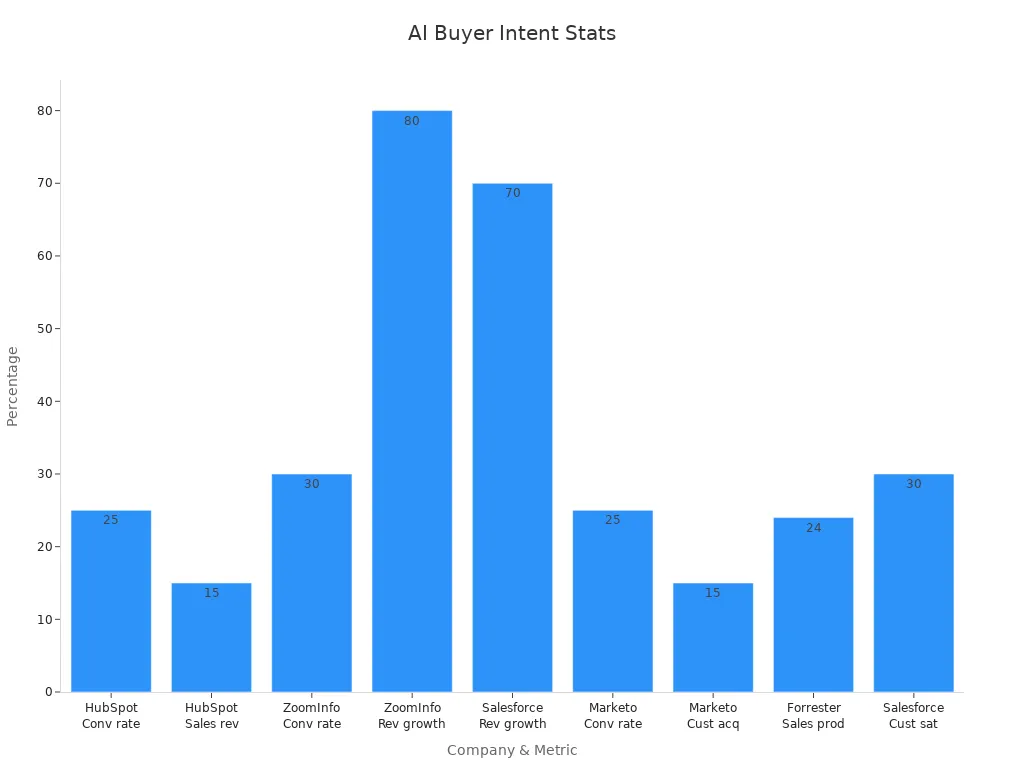
Query Similarity
Query similarity helps you group together questions that mean the same thing, even if people use different words. For example, "how to lose weight fast" and "quick weight loss tips" have the same intent. AI uses natural language processing to spot these patterns.
Predictive analytics looks at past user data to guess what people will do next. This helps you target your content more precisely.
NLP reads user-generated content to match ads and articles with what people want.
NLP and Sentiment Analysis

Natural Language Processing (NLP) helps you dig deeper into what your readers want. By using advanced tools, you can extract meaning from text, spot important names or places, and even measure how people feel about your content. These methods help you understand reader intent with more accuracy.
Named Entity Recognition
Named Entity Recognition (NER) lets you find and label key information in text, such as names, brands, or locations. Modern NER tools use deep learning models like RNN, LSTM, and transformers. These models learn from large datasets and can tell the difference between words with more than one meaning. For example, "Apple" could mean a fruit or a company. Newer systems combine rule-based and machine learning methods, which boosts accuracy. Fine-tuning pre-trained models also helps when you have less data. This means you can spot trends and topics that matter most to your readers.
Tip: Try tools like spaCy or Hugging Face Transformers to run NER on your blog comments or social media mentions.
Sentiment Detection
Sentiment detection uses AI to figure out if feedback is positive, negative, or neutral. You can apply this to reviews, comments, or social posts. One study showed that a Random Forest Classifier reached about 96% accuracy, precision, and recall when classifying sentiment. This high score means you can trust the results most of the time. However, sarcasm, context, and language differences can still cause errors. By tracking sentiment, you can see how changes in your content affect user engagement. For example, longer sessions and higher Net Promoter Scores often follow positive feedback.
Metric Name | What It Shows | Benefit |
|---|---|---|
Session Duration | How long users stay | Higher engagement |
NPS (Net Promoter) | Willingness to recommend | Better satisfaction |
Conversion Rate | Users taking action | Improved content effectiveness |
Behavioral Analysis
Behavioral analysis looks at what users do, not just what they say. You can group users by actions, like favoriting posts or joining groups. Studies show that users who do both have over 70% retention, while those who do only one have about 50%. This big difference helps you test ideas about what your readers want. Tracking metrics like bounce rate, time on page, and conversion rate gives you a clear picture of how well your content matches reader intent. Companies that use these insights often see better results in their marketing and content strategies.
Note: Use cohort analysis and A/B testing to see how different behaviors link to your goals.
Personalization and Intent Clustering

Audience Segmentation
You can use AI to group your audience by their behaviors, interests, or actions. This process, called audience segmentation, helps you send the right message to the right people. AI works much faster than humans, segmenting customers up to 100 times quicker. It also predicts customer churn with 90% accuracy. Companies like Netflix use clustering to group users by taste, not just age or location. This approach lets Netflix show each user only 40 to 50 titles they will likely enjoy. As a result, users spend more time watching and stay loyal longer.
Description / Impact on Personalization | |
|---|---|
Session Duration | Indicates user engagement time, showing interest in personalized content |
Click-Through Rate (CTR) | Tracks user response to personalized ads and calls-to-action |
Conversion Rates | Measures success in achieving goals like purchases or sign-ups |
Customer Lifetime Value (CLV) | Predicts long-term revenue impact from personalized retention efforts |
Real-World Example: Netflix | Personalized clustering reduced content overload, increased retention |
AI can also reduce marketing costs by 30% and increase customer lifetime value by 25%. You get better results with less effort.
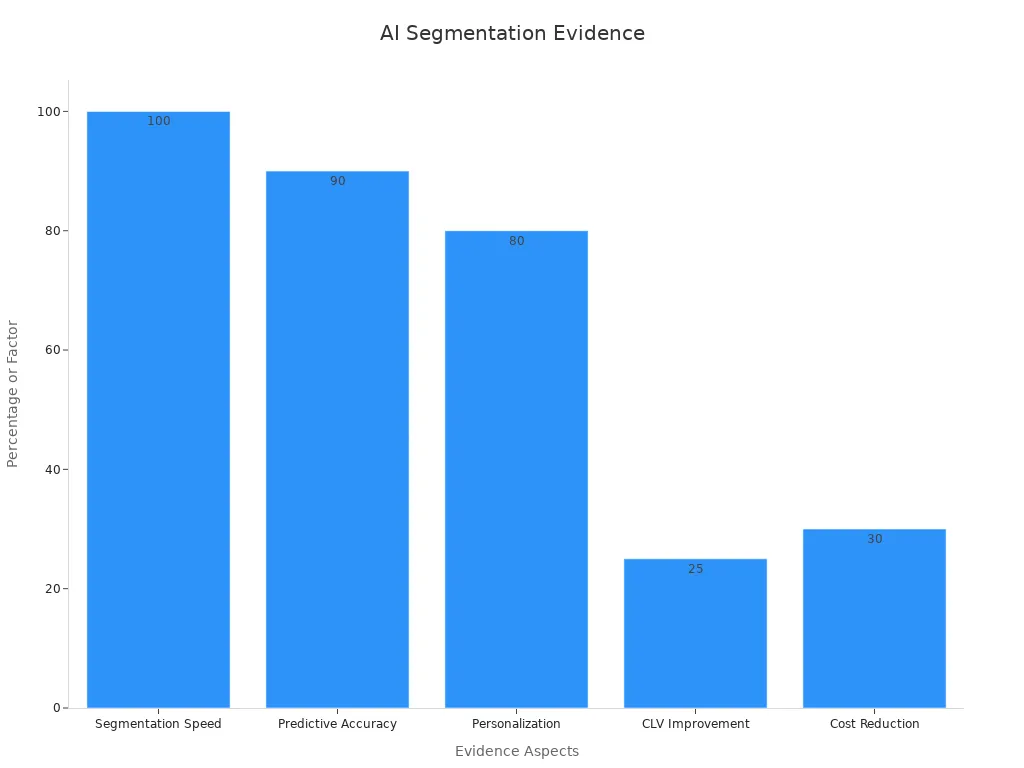
Content Personalization
Content personalization means you show each user content that matches their needs and interests. AI helps you do this by learning what each person likes. For example, Amazon’s recommendations drive 35% of its yearly sales. Sephora’s AI tool for virtual try-ons led to a 30% rise in engagement and an 11% increase in conversions. HP Tronic saw a 136% jump in conversions with AI-powered campaigns. When you personalize content, users spend more time on your site and interact more with your posts.
HP Tronic boosted conversions by 136% with AI-driven segmentation.
North Face increased click-through rates by 60% using a voice-powered AI assistant.
Yves Rocher saw 17.5 times more clicks and 11 times more conversions with real-time AI suggestions.
Personalization can raise your marketing ROI by 20% and nearly triple your revenue impact.
Intent Clustering
Intent clustering uses AI to group similar user intents together. This helps you Understand Reader Intent on a larger scale. AI models like qwen14b, when combined with context-aware techniques, improve clustering accuracy by over 6%. Convex-hull sampling makes clusters more accurate and closer to what people expect. Iterative clustering with AI can boost intent classification performance by 12%. These methods help you spot trends and create content that matches what your audience wants.
Method Variant | NMI Score | Improvement |
|---|---|---|
Hierarchical (baseline) | 0.8201 | — |
qwen14b + prior + merge + keyphrase | 0.8826 | +6.25% |
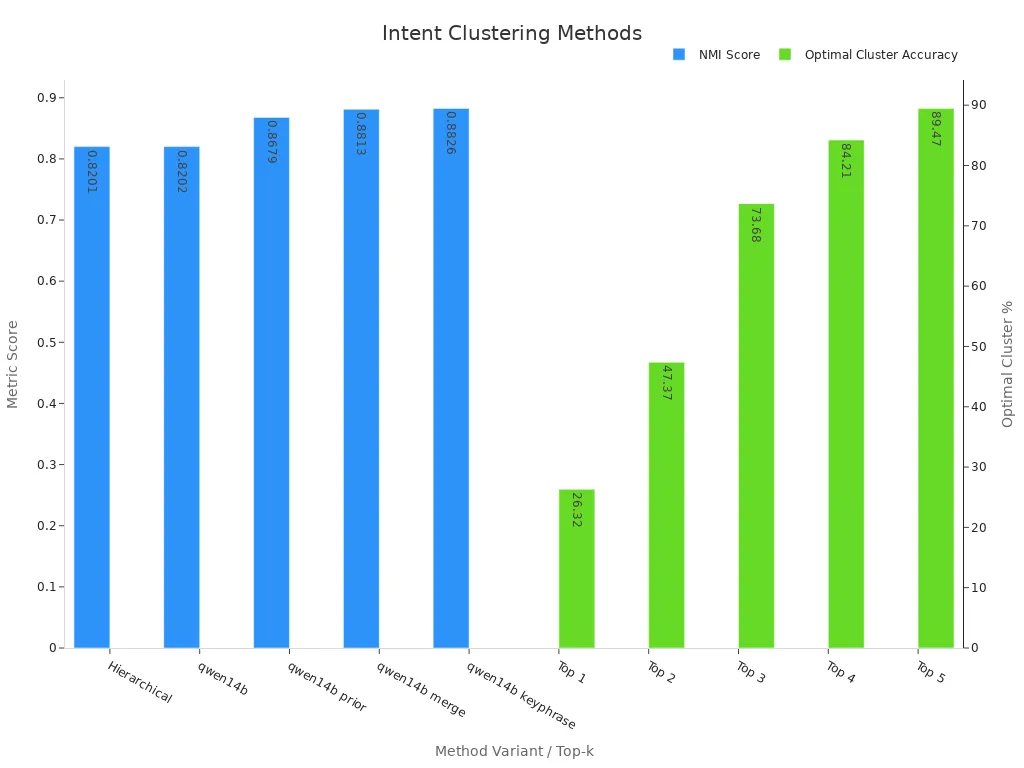
When you use intent clustering, you can deliver more relevant content and keep your audience engaged.
Real-Time Trends and Adaptation
Trend Monitoring
You can use AI to track trends as they happen. AI tools watch your content performance in real time. They show which blog posts, videos, or pages get the most attention. You see what works and what needs to change. AI also checks search queries to spot new topics your audience wants. This helps you stay ahead of the curve.
AI sends alerts if your site has broken links or drops in search rankings.
It watches your competitors and tells you when they launch new content.
AI gives instant advice on keywords, readability, and meta tags.
It checks the mood of your content to match what your readers like.
AI updates your content based on how long people stay or if they leave quickly.
It suggests new keywords and topics from trending searches.
You get dashboards that show all this data in one place.
AI handles routine SEO checks, so you can focus on creating better content.
Many marketers use these tools every day. In fact, 57% use AI for data analysis, and 51% use it to optimize content. Over 50% create content with AI, and 45% use it for brainstorming ideas.
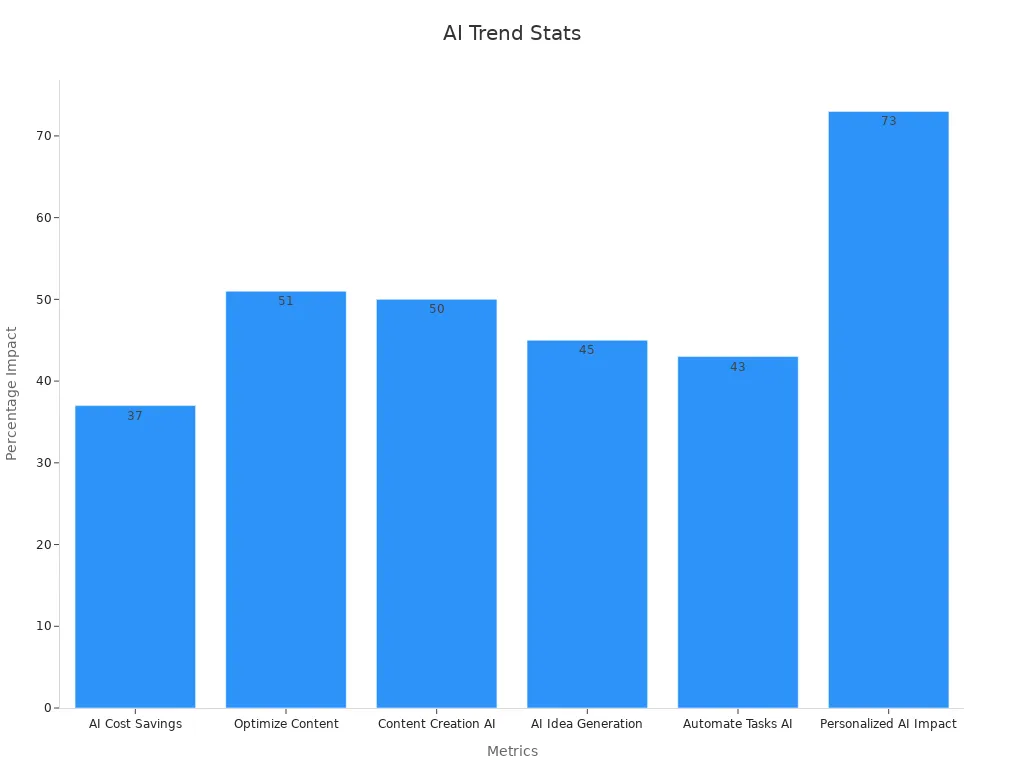
Content Adjustment
AI helps you change your content fast. When you see a trend, you can update your posts or add new ones right away. AI shows you which changes work best by tracking key metrics:
Metric | Description | Why It Matters |
|---|---|---|
How many times people see your content | Shows what is popular | |
Time on Page | How long users stay on a page | Longer time means more interest |
Bounce Rate | How many leave after one page | Lower rates mean better engagement |
Click-through Rate | How many click links or buttons | Measures action from your content |
Conversion Rate | How many complete a goal (buy, sign up, etc.) | Shows content drives results |
Customer Acquisition Cost | Cost to get a new customer | Lower cost means better efficiency |
You should set a baseline before using AI. This way, you can see how much your results improve. Marketers report a 25% boost in campaign performance and a 15% rise in conversion rates after using AI insights. AI also helps you save time and money by automating tasks and making quick changes.
AI gives you a clear way to Understand Reader Intent and create content that matches what your readers want. You see real results, like higher productivity and smarter marketing. Over 76% of B2B companies use buyer intent data to guide their strategies. The table below shows how AI tailors content for different search intents.
Statistic Description | Value / Insight |
|---|---|
Total queries analyzed | 11,162 |
Overall AI Overview trigger rate | 21.1% |
Highest AI Overview trigger by intent | Informational queries: 28.8% |
Lowest AI Overview trigger rates | Navigational: 1.7%, Transactional: 1.2% |
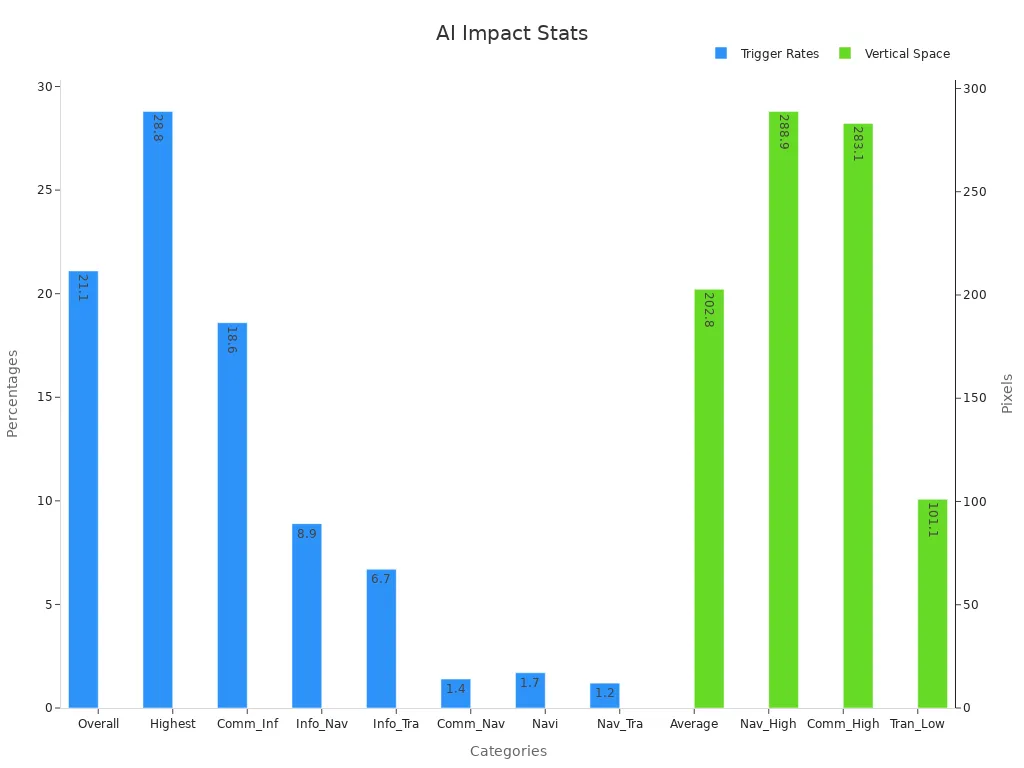
Try using one AI tool from this guide. Start by auditing your current content to see if it matches what your readers are looking for.
FAQ
How does AI know what my readers want?
AI looks at search queries, clicks, and time spent on pages. It finds patterns in this data. You get insights about what topics interest your audience most.
Can I use AI tools without coding skills?
Yes! Many AI tools have easy dashboards. You can upload your content or connect your website. The tool shows results with simple charts and tips.
What is the best way to start using AI for reader intent?
Start by picking one AI tool. Try it on your blog or website. Look at the results. Adjust your content based on what you learn.
Does AI replace human judgment in content creation?
No. AI gives you data and suggestions. You still decide what to write. Use AI as a helper, not a replacement.
See Also
Comparing Writesonic AI And QuickCreator For Content Creation
Complete Guide To Achieving SEO Success Using Perplexity AI
Exploring SEO Writing And Its Key Principles Uncovered

